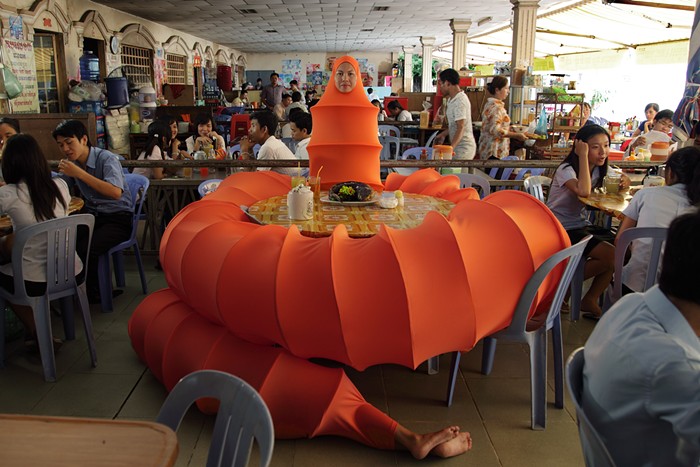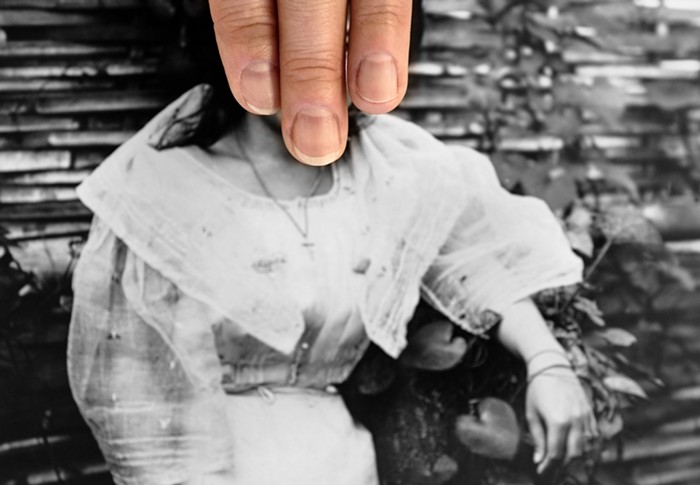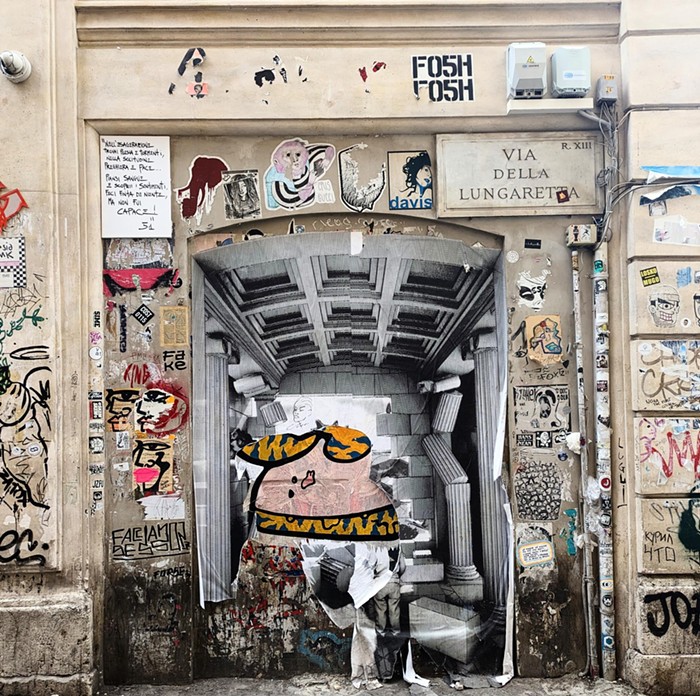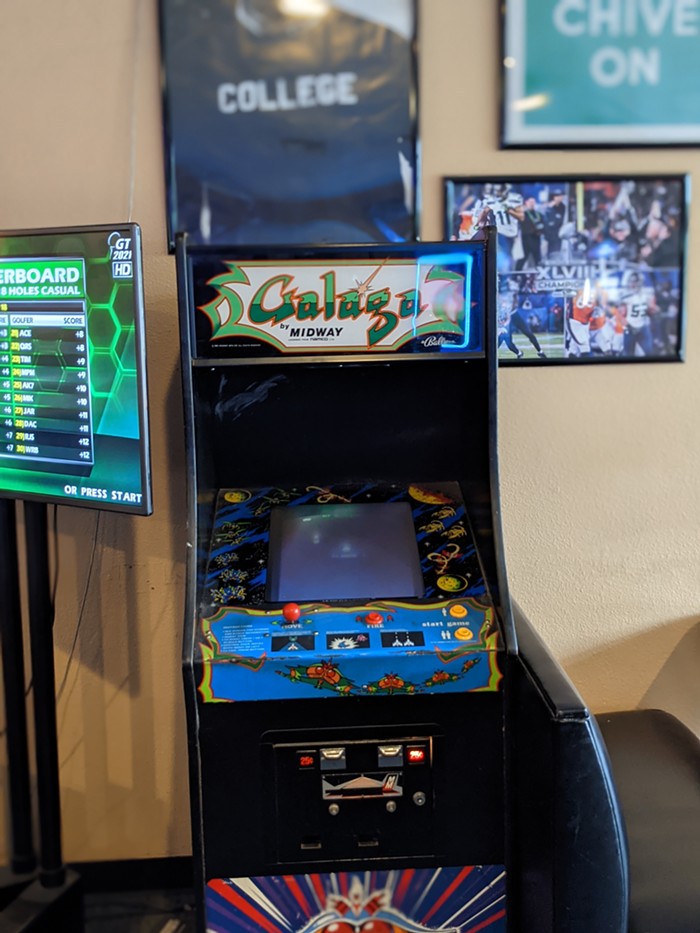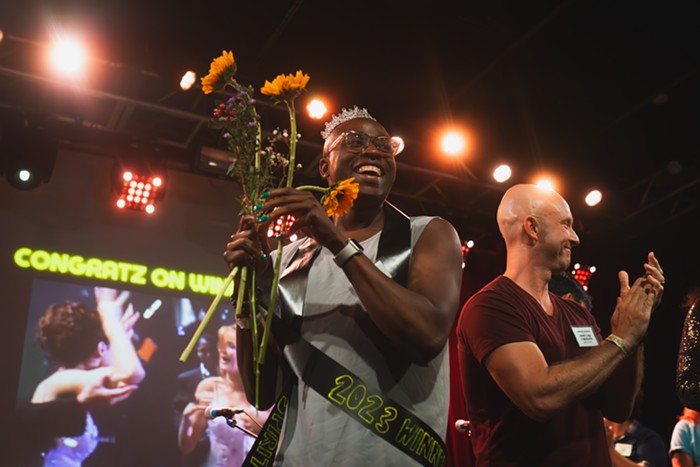
Last year, when artist and University of Washington alum Miha Sarani’s painting, which was hanging in Mary Gates Hall, got vandalized, he was distraught.
Especially because the painting, a seven-by-eight-foot portrait of Maitreya (formerly known as Terence Trent D’Arby), an African-American funk and R&B musician, was destroyed in such a violent, visceral way—the vandal had slashed through the mouth on Maitreya’s face.
“I was really, really upset, and I wanted to do something that might be able to kind of help explain things—maybe if only even just to myself, you know,” Sarani explains.
About a month later, a UW staff member told him that she had collected some of the pieces around the painting that had been destroyed.
“She handed me a little box, and there were these tiny little cuts of paper. Some of them you could actually recognize—they were the lips from the painting, and some of them were just completely unsalvageable, like they had gone through a shredder or something.”
When Sarani saw those pieces from the damaged painting, he knew exactly what to do.
“Once I saw those pieces I thought to myself: I need to make a new piece that would be a dialogue with the original painting, and incorporate the lips, and extend its life. It would really kind of propel the work further by not allowing it to stagnate by being damaged,” Sarani says.
So he set to work creating another painting, titled Re:DUX, layering the damaged pieces from the original into a collision of textures and colors, shaped with resin and thick paint. In the work there are references to rock formations and artists who inspired him, like Rauschenberg and Duchamp, explains Sarani.
“I was trying to kind of articulate the whole incident to myself and I thought, you know—it all stems from fear. Whoever destroyed the painting must have been feeling some sort of fear. So, I thought maybe this new work should have almost like, a prehistoric kind of feel.”

And the lips? They are blended into the new work, and if you look at the new painting from the side, Sarani says, the lips form a shadow.
“It looks like they are floating.”

Sarani says the vandalism that occurred last year only emphasizes his original point with the work–to highlight the struggle of artists and musicians of color in an age of cultural re-appropriation, and to show the “spirit of achievement and the strength of an individual” in the face of these challenges.
Now, the new painting stands only a few feet away from the damaged original—which is still hanging. Sarani says the attack, ironically, brought the painting new life.
“So, not only did it physically survive the attack, right? I mean the physical presence is there, but there’s a spotlight on it now that wasn’t there before. Had they not touched the painting, nobody would know. And hopefully it’s become even more significant and powerful to people then it was before.”
Sarani realizes that it’s highly probable the vandal is/was a UW student or community member, and it’s possible they may still walk by the paintings every day. And Sarani’s message to them?
“I would say, do it again and see what happens next time…maybe we make a statue out of it.”
